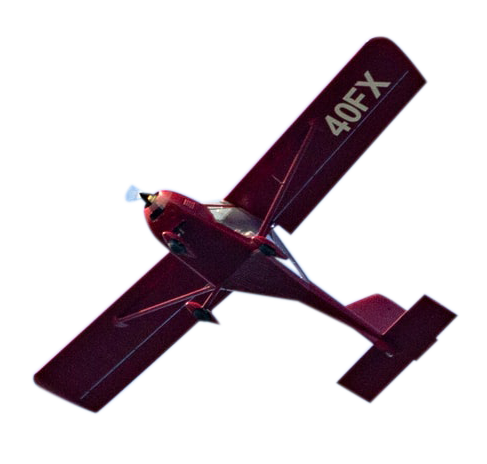 Frequency Monitoring Codes
Frequency Monitoring Codes
When you are operating close to controlled airspace (CAS) and operating autonomously, i.e.not already in receipt of a service under the UKFIS, it is good practice to monitor the relevant ATC frequency of that airspace. By doing so you will develop situational awareness of traffic in receipt of a service and of also traffic landing at, or departing from, the Airport that the CAS serves; you will also get updates on the relevant QNH and may hear warnings of developing/changing weather.
Rather than squawking conspicuity (7000 for VFR or 2000 for IFR), you are encouraged to select the most relevant Frequency Monitoring Code (FMC), colloquially known as a Listening Squawk, of the appropriate ATSU to indicate that you are monitoring that unit’s frequency. When you are creating your PLOG and Frequency Card for the flight, add the FMC details so that are close to hand. When using the Pilot Log on a Moving Map they are included in the frequency section.
Whilst you will not be in receipt of any service under UK FIS, the use of an FMC helps in preventing and mitigating the consequences of airspace infringements for both you and ATC. This works by allowing the ATSU to be aware that you are on its frequency and enables it to quickly contact you if you are infringing (or are likely to infringe if capacity permits) CAS thereby allowing an actual or potential infringement efficiently to be resolved quickly and before it becomes a more serious incident.Although some ATSU may, subject to controlling capacity, offer warnings of a possible impending infringement (defensive controlling), there can be no guarantee that you will always be warned of such if controlling capacity does not permit. Remember that you remain responsible for your own navigation and, in particular, for obtaining a clearance to enter controlled airspace.
If you intend to use an FMC, you should:
- select the radar controller’s radio frequency and check the volume BEFORE selecting the appropriate FMC;
- select the FMC on the transponder and if equipped use ALT (mode C) or ideally mode S
- listen out for any transmissions with your position or possibly using your callsign if mode S equipped
If both the aircraft and ATSU are equipped with MODE S, you will be issued a warning based on the aircraft’s registration/callsign. If either/both the ATSU and the aircraft is/are not equipped with MODE S, you will be issued with a warning based on the aircraft’s position.
“Have you turned the volume up?” It is not unusual for ATSUs to report their inability to establish 2-way contact with pilots of aircraft displaying an FMC who are just about to or have infringed. This is invariably due to the volume having been turned down in the aircraft’s radio often due to radio comms impacting on instructional tasks or general chat with passengers. It is essential that prior to selecting the SSR code, the radio is set to the relevant frequency and the volume checked.
It is important that you also consider other aerodromes’ and their traffic when planning who best to listen to/communicate with; sometimes temporarily changing from an FMC to a local aerodrome’s frequency (and deselecting the FMC) may better mitigate the risk of mid-air collision. For example, when flying past the southeast corner of the Birmingham CTA in the vicinity of Coventry, rather than ‘skirting’ around the edge of the Coventry ATZ and using the Birmingham FMC/frequency, it may prove to be good airmanship to give the Coventry AFISO a call. This could improve your situational awareness of traffic operating into or out of the aerodrome; by doing so you will reduce many risks to you and other traffic, and remember Take 2 very much applies in this instance.
The FMC areas’ lateral limits are not marked on UK VFR charts but are notified by their coordinates in the relevant aerodrome/airport entry in the Aerodrome sections of the UK AIP at AD 2.22; an example for Birmingham Airport’s FMC area is at Figure 1. A chart depicting all the areas of UK FMC can be found in the UK AIP at ENR 6.80.
More details on FMC can be found in the YELLOW Aeronautical Information Circular entitled THE USE OF FREQUENCY MONITORING CODES IN THE UNITED KINGDOM FLIGHT INFORMATION REGIONS which is found on the NATS AIS website. This AIC details how to use FMC, lists all codes and associated frequencies and a chart extract from the UK AIP ENR 6.80.

If you are flying a non-transponder equipped aircraft, you are also encouraged to monitor or contact the relevant ATSU frequency whist operating close to CAS. If a non-squawking aircraft is infringing or about to infringe, ATC will attempt to resolve the situation by making a ‘blind transmission’ with the aim of establishing two-way contact with the pilot.

